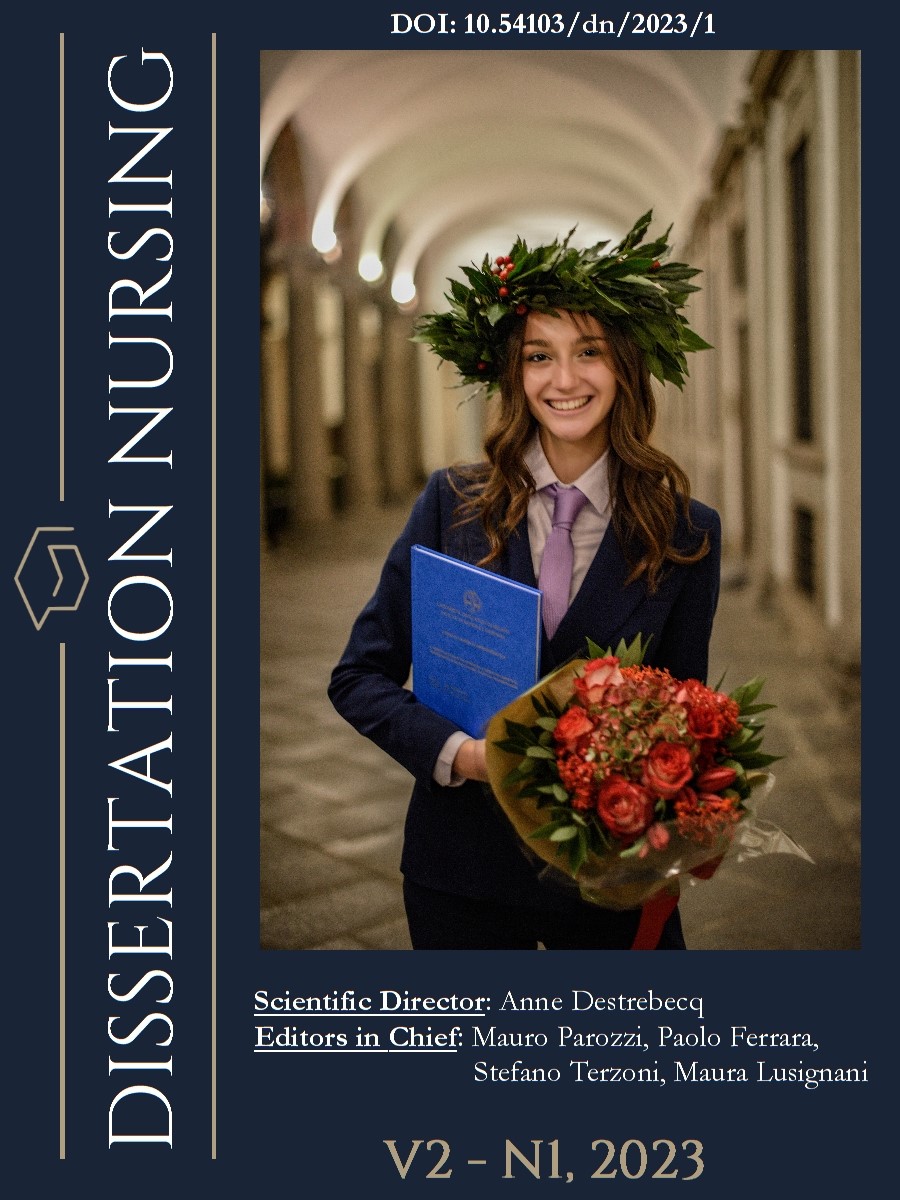Clinical reasoning skills in undergraduate nursing students: An observational study
DOI:
https://doi.org/10.54103/dn/19389Keywords:
nursing student, education, NRCS, non-technical skills, clinical reasoningAbstract
BACKGROUND:
Nurses use clinical reasoning to assimilate information, analyzed data, and make decisions regarding patient care. Research suggests that nursing students have to acquire clinical reasoning skills early in the classroom and in clinical environments to be prepared for their future role. So far, few studies evaluated the degree of acquisition of clinical reasoning skills among nursing students.
AIM:
The primary goal of the study was to assess clinical reasoning skills among nursing students. The secondary goal was to analyze factors related to clinical reasoning skills.
METHODS:
A cross-sectional study was carried out. The Italian version of the instrument Nurse Clinical Reasoning Scale was administered at the University of Milan. Anova Test and Pearson correlation coefficients were calculated to explore factors related to clinical reasoning.
RESULTS:
A number of 205 students replied to the questionnaire. Students stated difficulties in acquiring skills useful to the development of clinical reasoning. The academic year attended (p<0.001), motivation (p=0.04), the number of hours spent in clinical environments (p< 0.001), and the number of internship experiences (p<0.001) showed a statistically significant correlation with clinical reasoning. The results also showed that, regardless of the modality of the clinical internship, the students have developed equal clinical reasoning skills (p=0.62).
CONCLUSIONS:
This study showed the importance of measuring clinical reasoning skills among nursing students. Future investigations should be conducted to confirm our results.
References
Banning M. Clinical reasoning and its application to nursing: Concepts and research studies. Nurse Educ Pract. 2008 May;8(3):177–83.
Hoffman K, Dempsey J, Levett-Jones T, Noble D, Hickey N, Jeong S, et al. The design and implementation of an Interactive Computerised Decision Support Framework (ICDSF) as a strategy to improve nursing students’ clinical reasoning skills. Nurse Educ Today. 2011 Aug;31(6):587–94.
Hunter S, Arthur C. Clinical reasoning of nursing students on clinical placement: Clinical educators’ perceptions. Nurse Educ Pract. 2016 May;18:73–9.
Richards JB, Hayes MM, Schwartzstein RM. Teaching Clinical Reasoning and Critical Thinking. Chest. 2020 Oct;158(4):1617–28.
Levett-Jones T, Hoffman K, Dempsey J, Jeong SYS, Noble D, Norton CA, et al. The ‘five rights’ of clinical reasoning: An educational model to enhance nursing students’ ability to identify and manage clinically ‘at risk’ patients. Nurse Educ Today. 2010 Aug;30(6):515–20.
Forsberg E, Ziegert K, Hult H, Fors U. Clinical reasoning in nursing, a think-aloud study using virtual patients – A base for an innovative assessment. Nurse Educ Today. 2014 Apr;34(4):538–42.
Simmons B. Clinical reasoning: concept analysis. J Adv Nurs. 2010 May;66(5):1151–8.
Côté S, St-Cyr Tribble D. [Clinical reasoning in nursing, concept analysis]. Rech Soins Infirm. 2012 Dec;(111):13–21.
Liou SR, Liu HC, Tsai HM, Tsai YH, Lin YC, Chang CH, et al. The development and psychometric testing of a theory-based instrument to evaluate nurses’ perception of clinical reasoning competence. J Adv Nurs. 2016 Mar;72(3):707–17.
Holder AG. Clinical Reasoning: A State of the Science Report. Int J Nurs Educ Scholarsh [Internet]. 2018 Nov 7 [cited 2022 Nov 28];15(1). Available from: https://www.degruyter.com/document/doi/10.1515/ijnes-2016-0024/html
Aiken LH. Educational Levels of Hospital Nurses and Surgical Patient Mortality. JAMA J Am Med Assoc. 2003 Sep 24;290(12):1617–23.
Huang HM, Huang CY, Lee-Hsieh J, Cheng SF. Establishing the competences of clinical reasoning for nursing students in Taiwan: From the nurse educators’ perspectives. Nurse Educ Today. 2018 Jul;66:110–6.
Johnsen HM, Fossum M, Vivekananda-Schmidt P, Fruhling A, Slettebø Å. Teaching clinical reasoning and decision-making skills to nursing students: Design, development, and usability evaluation of a serious game. Int J Med Inf. 2016 Oct;94:39–48.
Kuiper R, Pesut D, Kautz D. Promoting the Self-Regulation of Clinical Reasoning Skills in Nursing Students. Open Nurs J. 2009 Oct 2;3:76–85.
Banning M. Clinical reasoning and its application to nursing: Concepts and research studies. Nurse Educ Pract. 2008 May;8(3):177–83.
Liaw SY, Rashasegaran A, Wong LF, Deneen CC, Cooper S, Levett-Jones T, et al. Development and psychometric testing of a Clinical Reasoning Evaluation Simulation Tool (CREST) for assessing nursing students’ abilities to recognize and respond to clinical deterioration. Nurse Educ Today. 2018 Mar;62:74–9.
Liou SR, Liu HC, Tsai HM, Tsai YH, Lin YC, Chang CH, et al. The development and psychometric testing of a theory-based instrument to evaluate nurses’ perception of clinical reasoning competence. J Adv Nurs. 2016 Mar;72(3):707–17.
Notarnicola I, Rocco G, Pulimeno A, De Jesus Barbosa MR, Iacorossi L, Petrizzo A, et al. [Linguistic validation and cultural adaptation of the Nurse Clinical Reasoning Scale]. Prof Inferm. 2020;73(1):5–11.
Liou SR, Liu HC, Tsai SL, Cheng CY, Yu WC, Chu TP. Development of the Computerized Model of Performance-Based Measurement System to Measure Nurses’ Clinical Competence. CIN Comput Inform Nurs. 2016 Apr;34(4):159–68.
Vierula J, Hupli M, Engblom J, Laakkonen E, Talman K, Haavisto E. Nursing applicants’ reasoning skills and factors related to them: A cross-sectional study. Nurse Educ Today. 2021 Jun;101:104890.
Theobald KA, Tutticci N, Ramsbotham J, Johnston S. Effectiveness of using simulation in the development of clinical reasoning in undergraduate nursing students: A systematic review. Nurse Educ Pract. 2021 Nov;57:103220.
Downloads
Published
How to Cite
Issue
Section
License
Copyright (c) 2023 Ilaria Marcomini, Neva Perboni, Laura Milani, Ippolito Notarnicola

This work is licensed under a Creative Commons Attribution-NonCommercial-NoDerivatives 4.0 International License.
Accepted 2022-12-23
Published 2023-01-30











